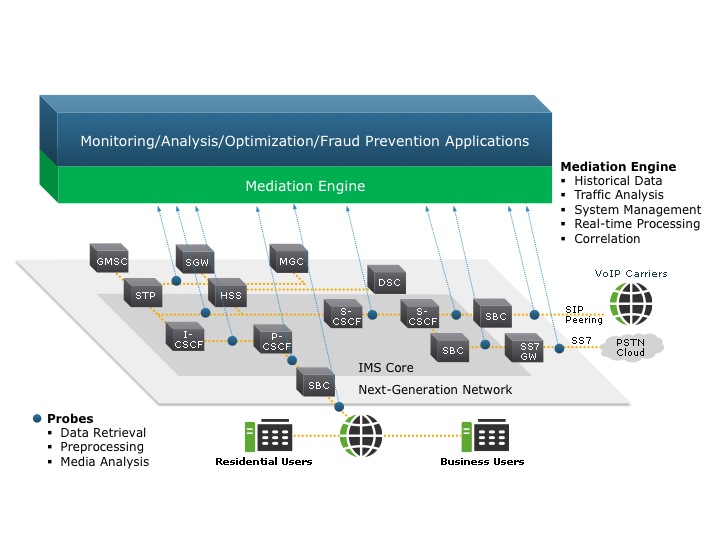Customer Experience Management in All-IP Networks
SIP is a 3GPP (3rd Generation Partnership Project) signaling protocol and an element of the IMS architecture that’s become the industry standard for creating, modifying and terminating IP multimedia sessions such as voice and video calls. Employed by both CSPs and enterprise networks, it works in concert with other Internet Engineering Task Force (IETF) protocols, including H.323, MGCP and Megaco, and was designed to support many of the call-processing functions of the PSTN. (Each resource of an SIP network, from a user agent to a voicemail box, is identified by a URI, or uniform resource identifier.)
Monitoring real-time sessions on IP networks
Although the technological differences between circuit-switched and all-IP networks are vast, the fundamental goals of managing the customer experience are the same. Network operators want to meet or exceed expectations of service quality, security and reliability, and they want to protect customers and the network itself from fraudulent attacks.
Meanwhile, Network operations staff want to carefully monitor the network to ensure its overall health, performance and availability of the network, and network engineers want to monitor its performance so they can address end-user trouble tickets, resolve device and network issues and put out any other fires that may pop up. Help-desk personnel interface directly with customers to resolve service issues, and network architects analyze the monitoring data to review registrations and call setup times, among other things, in an effort to continually optimize the network.
If a network operator can’t monitor a constantly changing IP network, it will be impossible to maintain the service levels that customers demand; CSPs will lose subscribers and enterprise networks will harm productivity as they anger and frustrate users. In retrospect, customer experience management (CEM) was more predictable in the circuit-switched world: when a circuit was provisioned you knew exactly how many users it could serve during peak periods. Granted, network operations staff had to monitor the physical characteristics of the circuit and the equipment along the path, but in the all-IP world the challenges have become more complex.
Constant awareness of the network is essential: in the all-IP world customers no longer rely on dedicated circuits to initiate a call, so end-to-end troubleshooting, service-monitoring and analytics solutions are needed to supply insight into VoIP (voice over IP) and UC (unified communications) networks. These next-generation solutions can help operators improve CEM by presenting a high-level overview of what’s actually happening in their networks in real time, with drill-down capability for a deeper understanding of services.




















